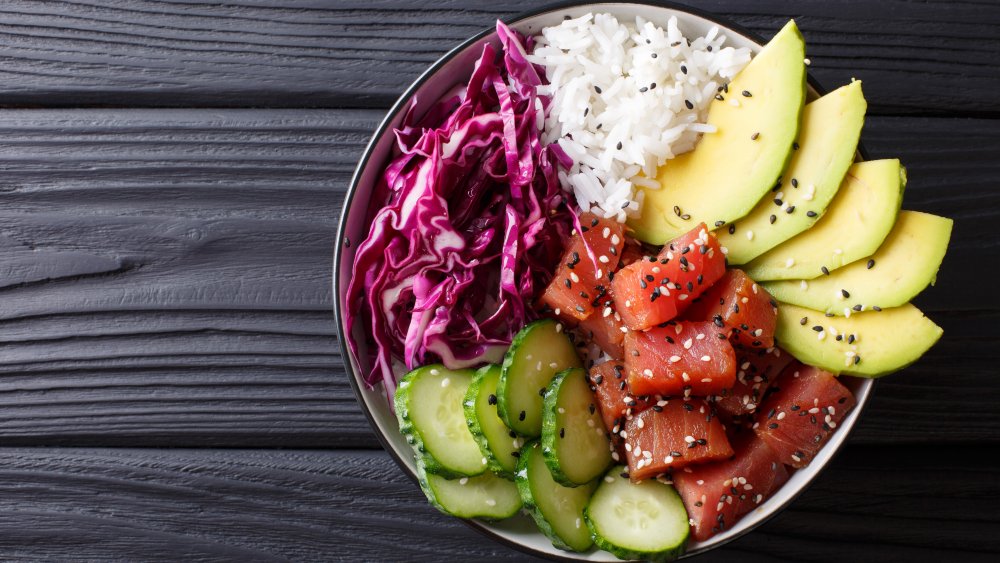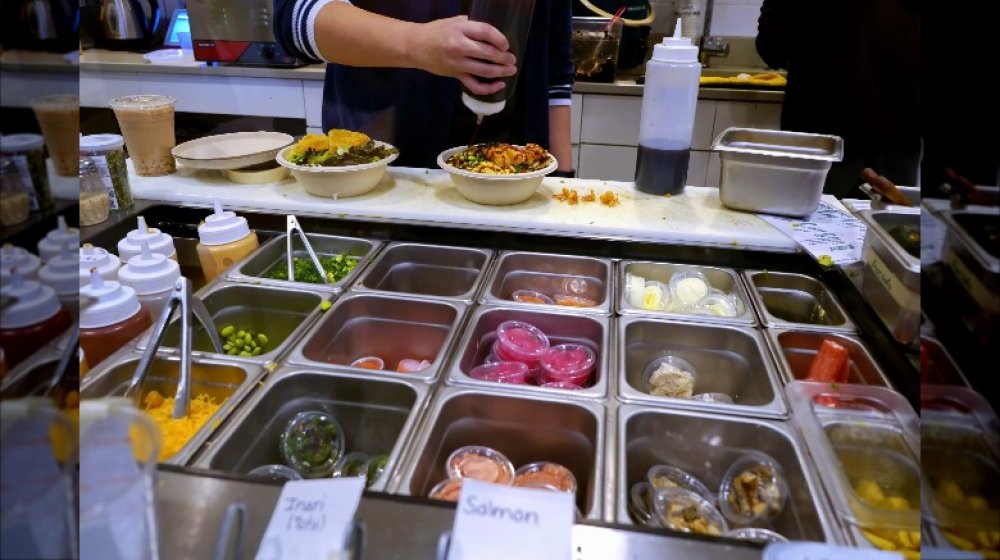Why Are Poke Bowls So Expensive?
A poke bowl is Hawaii's gift to sushi lovers everywhere. The colorful seafood bowl, whose name means "to cut into pieces," has its roots in Hawaii's street food culture, and is a symphony of flavors and textures. The base note for a good poke bowl is its rice, which former sushi chef Andres Bravo says is key. "Coming from a sushi background, I've learned that rice is very important when served with raw fish," Bravo tells HuffPost. "You want to have a good quality rice." Purists like Bravo suggest using traditional Japanese short-grain sushi rice, but brown rice works as well. In any case, the rice needs to be seasoned with rice vinegar and chopped seaweed, also known as kombu.
The star of this dish is its glistening chunks of fresh fish and for a poke bowl, Bravo says ahi tuna or yellowfin tuna will do — although fellow chef Al Cobb-Adams (who owns a top Yelp-ranked poke bar) has worked with marlin and salmon, but thinks bluefin tuna might be a better option. He says, "The fattier the fish, the better it will taste." Cobb-Adams also advises against using farm-raised or frozen fish because farmed fish are raised with man-made feed, which turns the fish into "something else."
Poke bowls are expensive for many reasons
Even though poke bowls can also be built with seafood such as scallops, octopus, and shrimp (via Da Poke Shack), the need to use fresh, free-range fish is why poke establishments charge between $10 to $20 per bowl; the price could be further justified with the addition of extra ingredients like avocado, edamame, and toasted nuts (via Bloomberg).
The dish may be traditional, but its rising popularity is making some people in the restaurant industry uneasy. The dish and its star ingredient, the ahi tuna, is nutritious and delicious, and for this reason, it's managed to pick up scores of fans along the way. This is concerning both chefs and environmentalists because they worry that the demand for poke cannot be met in a responsible way. And even though poke establishments say they are working with sustainable suppliers, chefs see the rising popularity of poke — and ahi poke in particular — as a problem for fish stocks in the future (via Grub Street).
So the poke bowl isn't just pricey because its main ingredient is fresh raw fish. Rising poke demand is also putting a strain on declining global tuna fish stocks, which could turn what was once a Hawaiian street food into a luxury food item.

